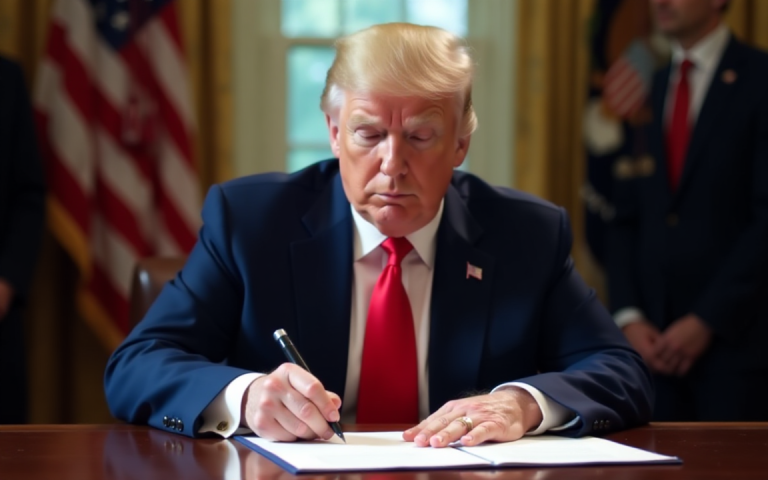The United States Senate on Tuesday finally gave its green light to President Donald Trump’s tax bill, advancing legislation that locks in many of his key policy goals while adding $3.3 trillion to the national debt.
The bill will now return to the House of Representatives for final passage.
Donald Trump has urged lawmakers to send it to his desk before the July 4 Independence Day deadline.
The tax cut bill, which President Donald Trump dubbed as a “big beautiful bill” became a major test for his administration as the GOP faced an uphill task to get consensus.
Despite the challenges, the GOP has largely held together.
Just three of the Senate’s 53 Republicans broke ranks to oppose the bill, which ultimately passed 51-50 thanks to a tiebreaking vote from Vice President JD Vance.
A similarly narrow vote is expected in the House, where Republicans have a slim 220-212 edge.
Why ban on AI regulation was removed?
Amid a ton of negotiations around the tax bill, the lawmakers looked united on one issue: removal of the 10-year ban on state AI regulation.
In a 99-1 vote, the Senate backed an amendment from Republican Senator Marsha Blackburn to remove the proposed 10-year ban on state-level AI regulation.
The vote came during an extended “vote-a-rama” session, where senators reviewed a flurry of amendments to the broader bill.
Senator Thom Tillis was the lone voice in favor of keeping the moratorium.
The proposal had faced strong bipartisan opposition from governors, state leaders, and lawmakers, who argued it would strip states of the ability to protect their residents in the absence of federal action.
Both Republicans and Democrats argued that, without comprehensive federal legislation, the moratorium would leave states powerless to safeguard their residents.
Opponents of the ban called it a “gift” to major tech companies, warning it would let them sidestep accountability at a time when states have introduced more than 1,000 AI-related bills.
Many feared that, with Congress often stalled by gridlock, a federal freeze on state action would effectively mean no real oversight at all.
Top AI companies like Alphabet (Google’s parent) and OpenAI have supported federal leadership on AI regulation, saying a nationwide framework would avoid a confusing mix of state laws and create a clearer path for innovation.
The Senate’s original version of Trump’s bill didn’t explicitly ban states from passing their own AI rules.
However, it included a provision that would have blocked any state that did so from receiving money from a new $500 million federal fund aimed at boosting AI infrastructure.
Trump’s tax bill: Key provisions
The “One Big Beautiful Bill Act” would make Trump’s 2017 tax cuts permanent, add new tax breaks, fund immigration enforcement, and repeal many of Biden’s green energy incentives.
It also tightens access to programs like Medicaid and SNAP, which critics say could hurt low-income Americans.
The CBO estimates it would add $3.3 trillion to the national debt and raise the borrowing limit by $5 trillion.
Republicans support the bill’s core goals but remain divided over Medicaid funding and tax breaks for high-tax states.
The post Why Senate removed 10-year ban on state AI regulation from Donald Trump’s tax bill appeared first on Invezz

